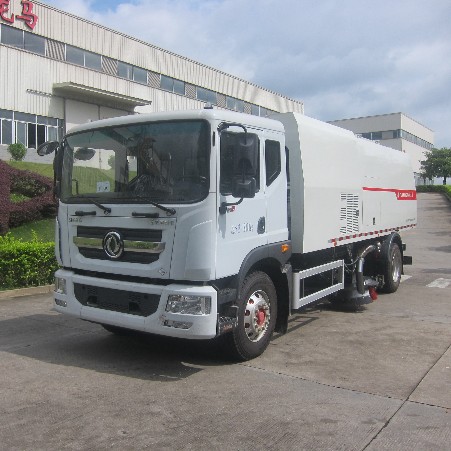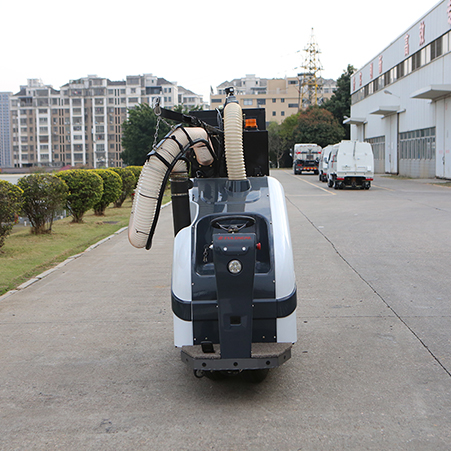A bustling city street, lined with shops, cafes, and office buildings. Now imagine that same street littered with trash, leaves, and other debris. Not a pretty sight, is it? That’s where street sweeper vacuum trucks come in. These mighty machines are tasked with the noble duty of keeping our streets clean and tidy, ensuring that our urban environments remain not only aesthetically pleasing but also safe and hygienic.
Street cleaning is more than just a cosmetic concern, it’s a matter of public health and safety. Accumulated debris not only mars the appearance of our cities but also poses a myriad of health risks, from attracting pests and vermin to clogging storm drains and causing flooding. By regularly sweeping our streets clean, we not only prevent these hazards but also promote a sense of pride and well-being within our communities.

What Are Street Sweeper Vacuum Trucks?
At their core, street sweeper vacuum trucks are specialized vehicles equipped with powerful vacuum systems designed to suck up debris from the ground. But they’re much more than mere vacuum cleaners on wheels. With their rotating brushes, water jets, and storage tanks, they’re equipped to tackle even the toughest cleaning challenges, from removing stubborn dirt and grime to clearing away fallen leaves and litter.
History and Evolution
The concept of street cleaning dates back centuries, with early civilizations employing rudimentary methods such as brooms and carts to sweep away dirt and waste. But it wasn’t until the advent of industrialization that street sweeping truly came into its own. In the late 19th and early 20th centuries, cities began experimenting with mechanized sweepers powered by steam and later gasoline engines. Fast forward to the present day, and we have the sophisticated street sweeper vacuum trucks of today, capable of cleaning vast stretches of road with unparalleled efficiency.

Components and Mechanisms
At the heart of every street sweeper vacuum truck lies a complex array of components and mechanisms working in perfect harmony. From the high-powered vacuum system that sucks up debris to the rotating brushes that sweep it into the machine’s path, every part plays a crucial role in ensuring thorough and effective cleaning.
Functions and Applications
So, what exactly do street sweeper vacuum trucks do? In a nutshell, they clean. They sweep. They vacuum. But their duties extend far beyond mere tidying up. From removing leaves and litter to clearing away sand and debris, they’re tasked with keeping our streets safe and navigable for pedestrians, cyclists, and motorists alike. And let’s not forget their role in maintaining the health of our urban ecosystems, preventing pollutants from entering our waterways, and wreaking havoc on our environment.
Types of Street Sweeper Vacuum Trucks
Not all street sweeper vacuum trucks are created equal. Depending on the specific needs of a given city or municipality, these versatile vehicles come in a variety of shapes and sizes. From compact units designed for narrow city streets to larger models equipped with advanced features such as automated controls and GPS tracking, there’s a street sweeper vacuum truck for every application.

Mechanical Broom Sweepers
Mechanical broom sweepers are the most traditional type of street sweepers. They use rotating brushes to sweep debris onto a conveyor belt, which then deposits the debris into a collection hopper. These sweepers are effective at picking up larger debris, such as leaves, gravel, and litter, making them ideal for general street cleaning.
Regenerative Air Sweepers
Regenerative air sweepers use a blast of air to dislodge debris from the street surface, which is then vacuumed into a collection hopper. The air is recycled through a filtration system, making these sweepers highly efficient at capturing fine particles and dust. They are particularly effective in environments where dust control is a priority.
Vacuum Sweepers
Vacuum sweepers operate similarly to household vacuum cleaners but on a much larger scale. They use powerful suction to lift debris directly from the street surface into a storage tank. These sweepers are highly effective at removing fine dust and small particles, making them ideal for areas with stringent cleanliness requirements.
High-Efficiency Sweepers
High-efficiency sweepers combine multiple technologies to maximize cleaning efficiency. They often feature both mechanical brooms and vacuum systems, providing a versatile solution for a wide range of cleaning needs. These sweepers are designed for maximum performance and are often used in areas with heavy debris and high cleanliness standards.
Compact Sweepers
Compact sweepers are smaller, more maneuverable sweepers designed for narrow streets, bike paths, and pedestrian areas. They often feature a combination of mechanical and vacuum technologies, allowing them to effectively clean tight spaces that larger sweepers cannot reach. These sweepers are essential for maintaining cleanliness in densely populated urban areas.
Advantages and Benefits
The benefits of street sweeper vacuum trucks are myriad. Not only do they keep our cities clean and attractive, but they also save time, money, and manpower compared to traditional cleaning methods. Removing debris before it has a chance to accumulate, helps prevent costly damage to infrastructure and reduces the risk of accidents and injuries. And let’s not forget the environmental benefits, from reducing pollution to conserving water and energy.
In conclusion, street sweeper vacuum trucks may not always be the most glamorous of vehicles, but they play a crucial role in maintaining the cleanliness and health of our cities. From their humble beginnings as horse-drawn carts to the sophisticated machines of today, they’ve come a long way in their quest to keep our streets clean and safe. So the next time you see one of these mighty machines in action, take a moment to appreciate the vital role they play in shaping the urban landscape.
FAQs
How often are street sweeper vacuum trucks deployed?
Street sweeper vacuum trucks are typically deployed on a regular schedule determined by the needs of a given city or municipality. In densely populated areas, they may be deployed daily or several times a week, while in less frequented areas, they may only be deployed on an as-needed basis.
Do street sweeper vacuum trucks only clean streets?
While streets are their primary focus, street sweeper vacuum trucks can also be used to clean a variety of other surfaces, including sidewalks, parking lots, and bike lanes. They’re also commonly used to clear debris from construction sites and industrial facilities.
How effective are street sweeper vacuum trucks at removing pollutants?
Street sweeper vacuum trucks are highly effective at removing pollutants such as dirt, dust, and litter from the streets. However, their effectiveness can be impacted by factors such as weather conditions, traffic volume, and the type of debris being removed.
Are street sweeper vacuum trucks environmentally friendly?
Yes, street sweeper vacuum trucks are considered environmentally friendly compared to other cleaning methods. They help reduce pollution by preventing debris from entering storm drains and waterways, and they use water and energy more efficiently than traditional cleaning methods.
Can street sweeper vacuum trucks be operated manually?
While some street sweeper vacuum trucks can be operated manually, many modern models are equipped with automated controls and GPS tracking systems for greater efficiency and accuracy. Manual operation is typically reserved for smaller, more compact units used in narrow or hard-to-reach areas.






